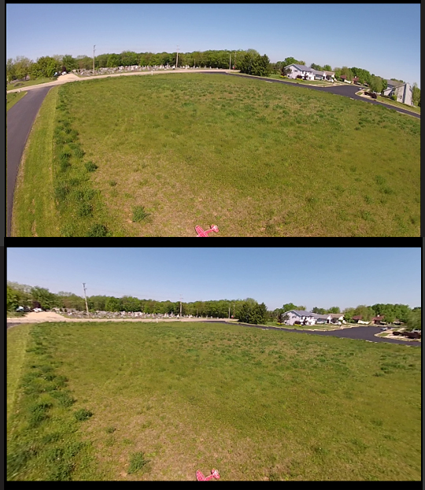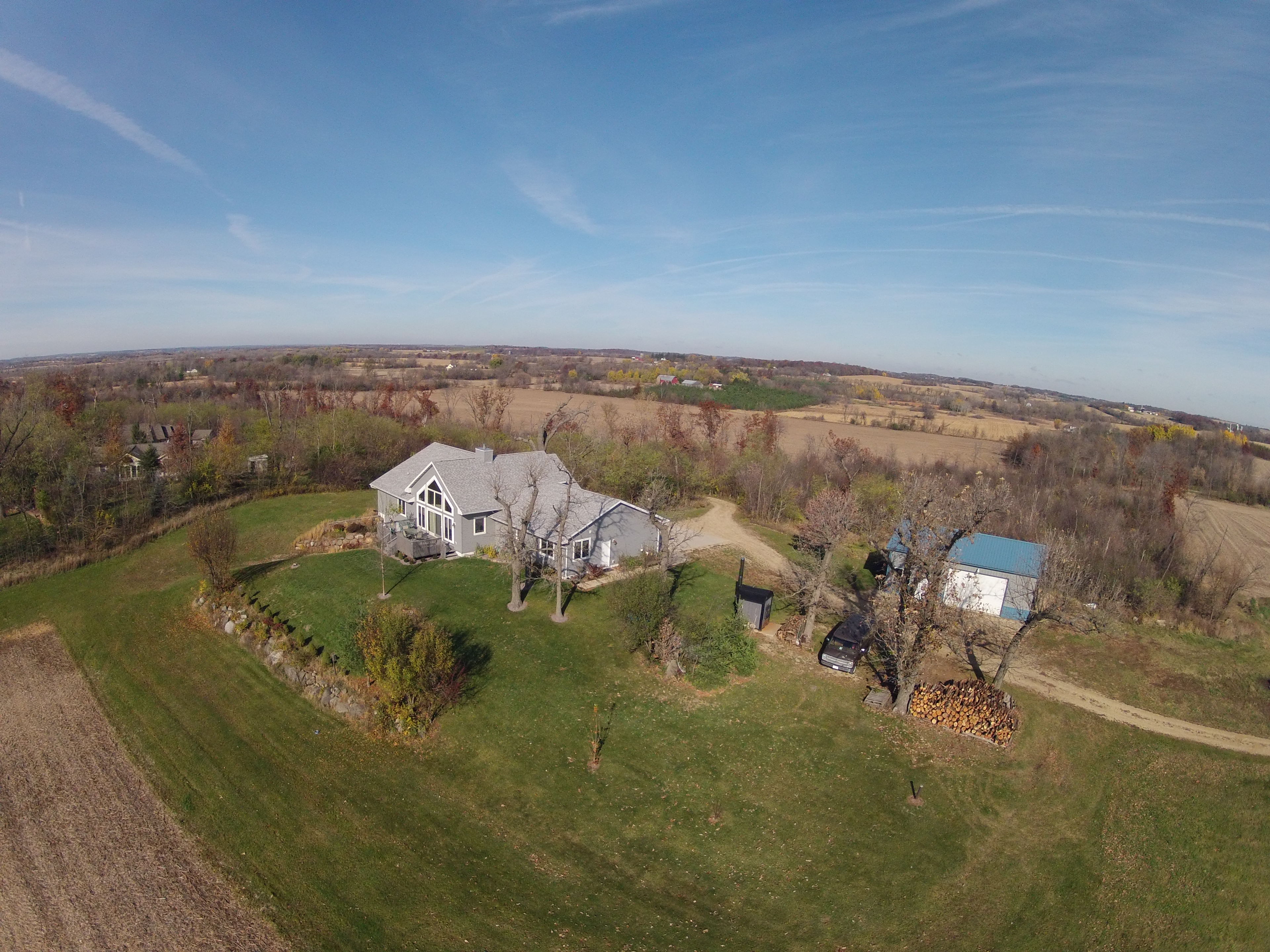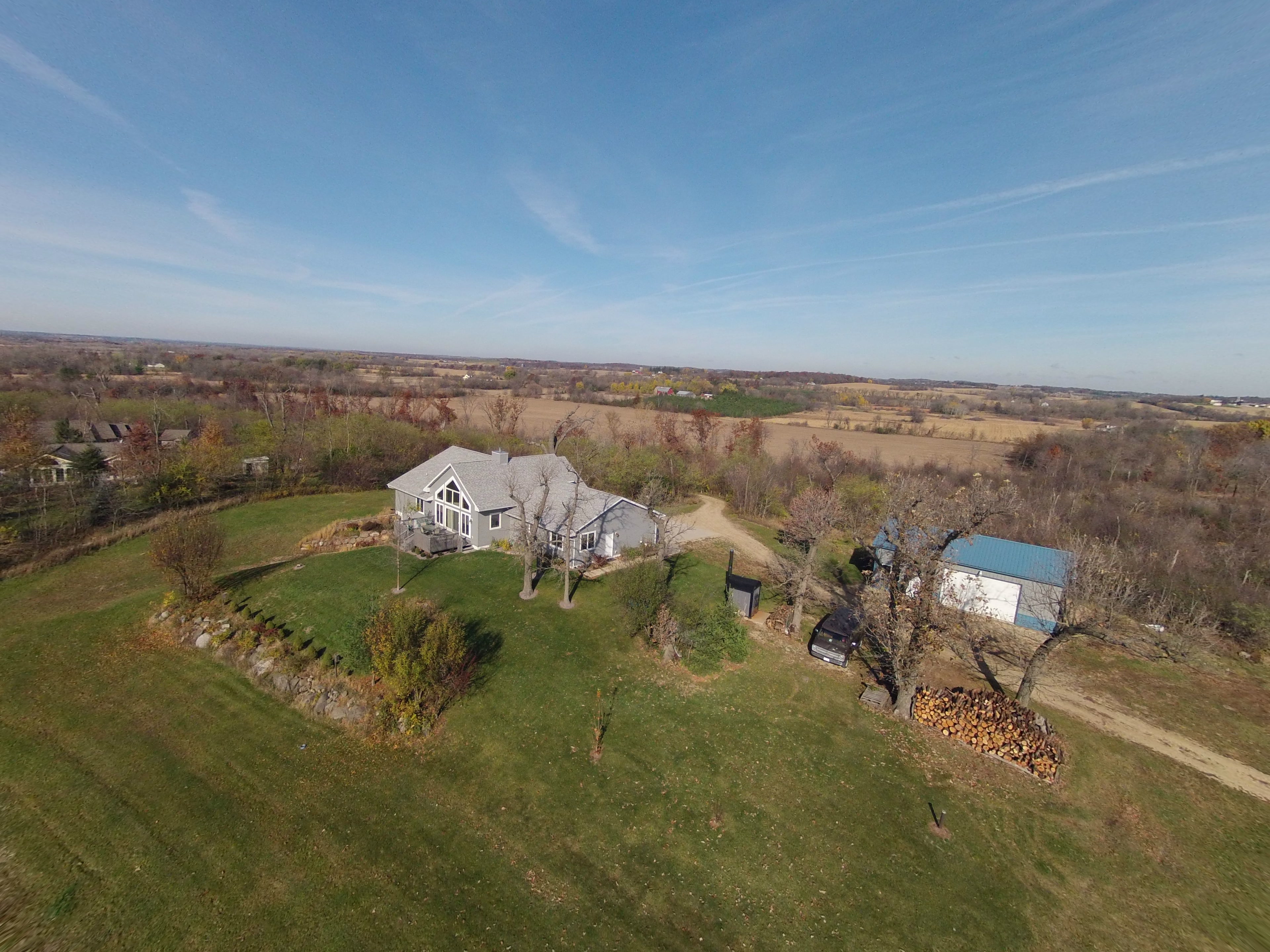Review: proDAD Defishr
With the popularity of POV cameras like the GoPro, a lot of shooters are producing extreme wide-angle footage with a pronounced (and usually unintended) fisheye look. proDAD's just-released Defishr application provides an ingenious fisheye fix.
On the Edge
Defishr does one thing extremely well: removing the fisheye effect throughout most of an image. What it can't do is restore the areas toward the outer edges of the screen that were distorted and stretched in the original footage. Figure 5 (below) shows a spot in the footage in the timeline where you can see some of the anomalies.

Figure 5. The extreme fisheye effect in the original image (top) is gone in the Defishr-corrected image on the bottom, but some anomalies remain around the edges of the image
In the top image (before) you see a power pole is straight but it's leaning in the fixed image on the bottom. You also see some stretching of houses or trees in the bottom image as well. In the center portion of the screen, the footage looks really good—a huge improvement—and depending on where your viewers are focusing their attention as this captured frame flies by with the video footage rolling, they may never notice the distortions on the edges. You can also see in Figure 5 that Defishr needs to zoom in a bit to allow room for the corrections. (In this way, it works similarly to video image stabilizing applications.)
If your footage began as 1080p footage you are still probably above the HD threshold of 720p, but if your footage began as 720p your footage will be near standard-definition resolutions by the time it is zoomed in for the fixes.
Export Quirks
I also discovered a few quirks with the Export functionality.
- I exported the clip of my buddy flying his plane in Compare View. The exported clip showed both the original and fixed versions, so Defishr exported what you saw on the screen. To export to full resolution, you need to export in View Result mode.
- As you can see in the samples, there seems to be a little bit of a color shift occurring in the encoding process. Both of my clips show a definite shift in the colors between the original and fixed clips. This is nothing major that a little color correction can't fix once I import the Defish'd clip into my NLE. Hopefully this will be fixed in a future release of Defishr.
- In my tests, the encode times from MP4 back to MP4 were slow. A 4-minute clip of my drive to the gym (see before and after footage in the video below) took more than 21 minutes to encode. Note that I'm working on a Sony i7 (with the first-generation processor) laptop. Not the quickest system available, but a very capable one.
Defish-ing Still Images
You can also use Defishr on still images. Functionality and export procedures for stills are identical to the video workflow. This can be handy to for a quick fix on a still image from a POV cam, and because the images are usually in the 8-10 megapixel range, your final quality will not suffer as much as with video footage.
Figures 6 and 7 below show a sample of a still image before and after the DeFishr was applied. In Defishr, you can click on the image to get a full resolution version for viewing.

Figure 6. The original still image

Figure 7. The fixed still image (with Defishr applied)
Defishr in Action
In the player below you'll see some short video clips showing some side-by-side comparisons and also final outputs in full screen. This will allow you to see how well Defishr works and whether it will solve problems you have with fisheye footage. In the footage the driving clips were shot at 1080/30p and the aerial footage was shot at 720/60p. The 720p footage will give you an idea of how much your final footage will be affected in the removal process by the zoom functionality.
Overall, the Defishr utility does what it says it will, correcting fisheye-plagued POV video that might not be fixable without it. I was impressed with quality of the fixed footage. Of course, it would be even better if it could fix the stretched footage at the edges of the frame as well. but that kind of magic may be just a little too much to ask for in a cost-effective application like Defishr. I give it a definite thumbs up.
Related Articles
Paul Schmutzler demos and discusses the first-ever Mac version of proDAD's popular and powerful Mercalli stabilization solution.
ReSpeedr employs Motion-flow analysis and can automatically determine to use Optical-flow or Dynamic Frame-blending technology to achieve ideal results with slow-motion sequences to bring out eye-popping details
Defishr, a new application for Windows, is designed to remove the warp and perspective (compression) distortion caused by very wide-angle camera lenses on GoPro-type action cameras, DSLR cameras fitted with wide-angle lenses, and even mobile phones with wide-angle lenses